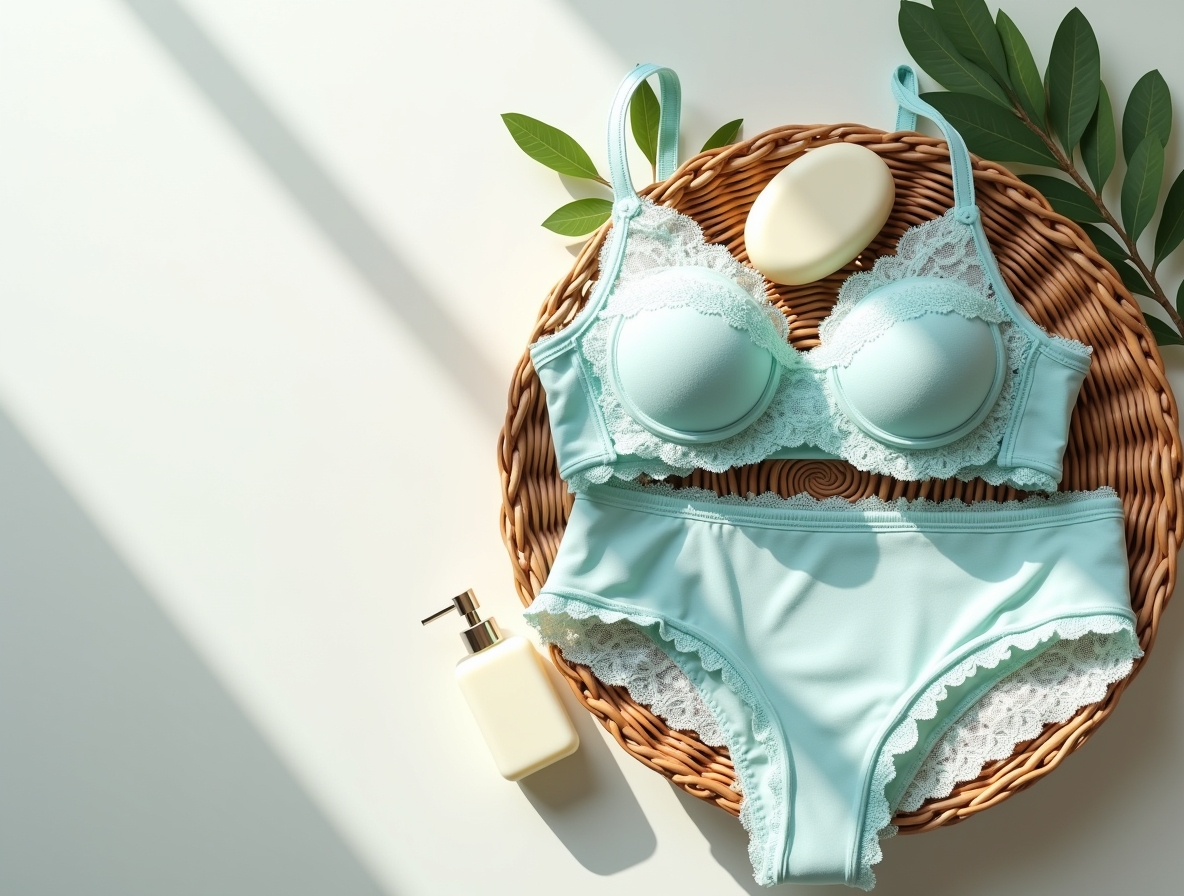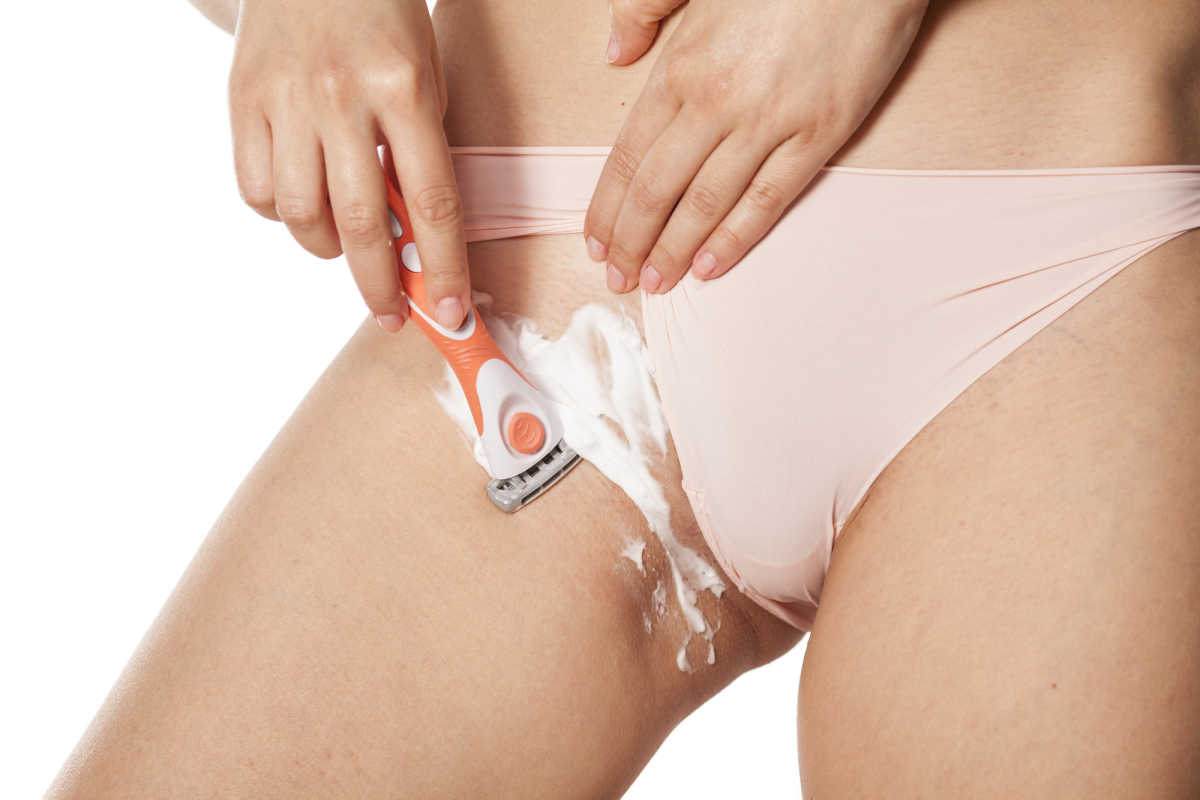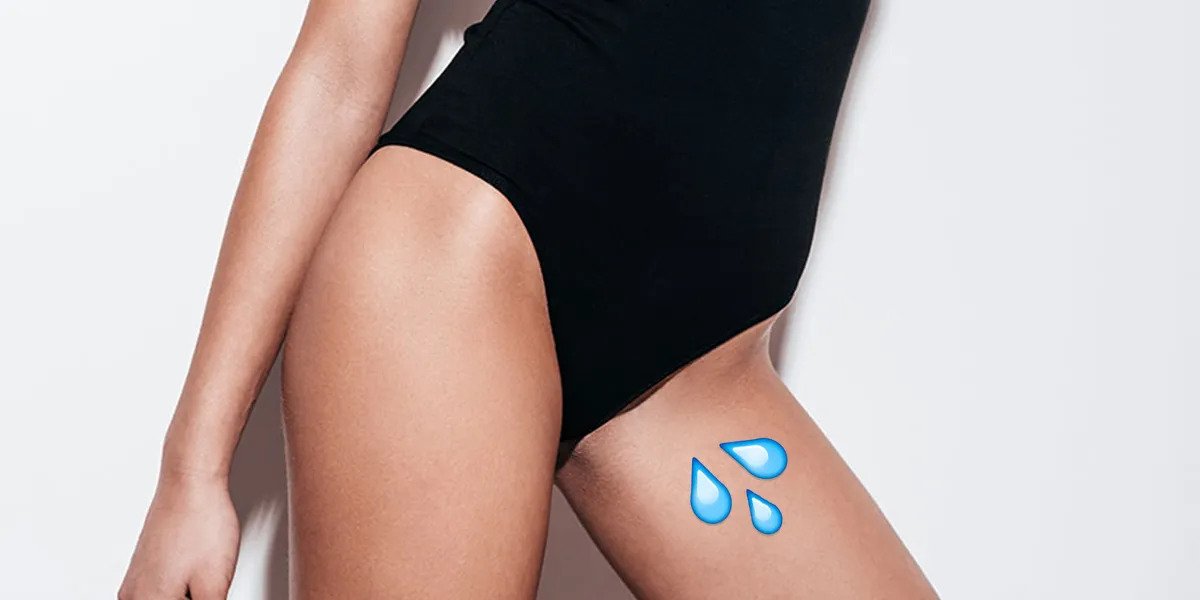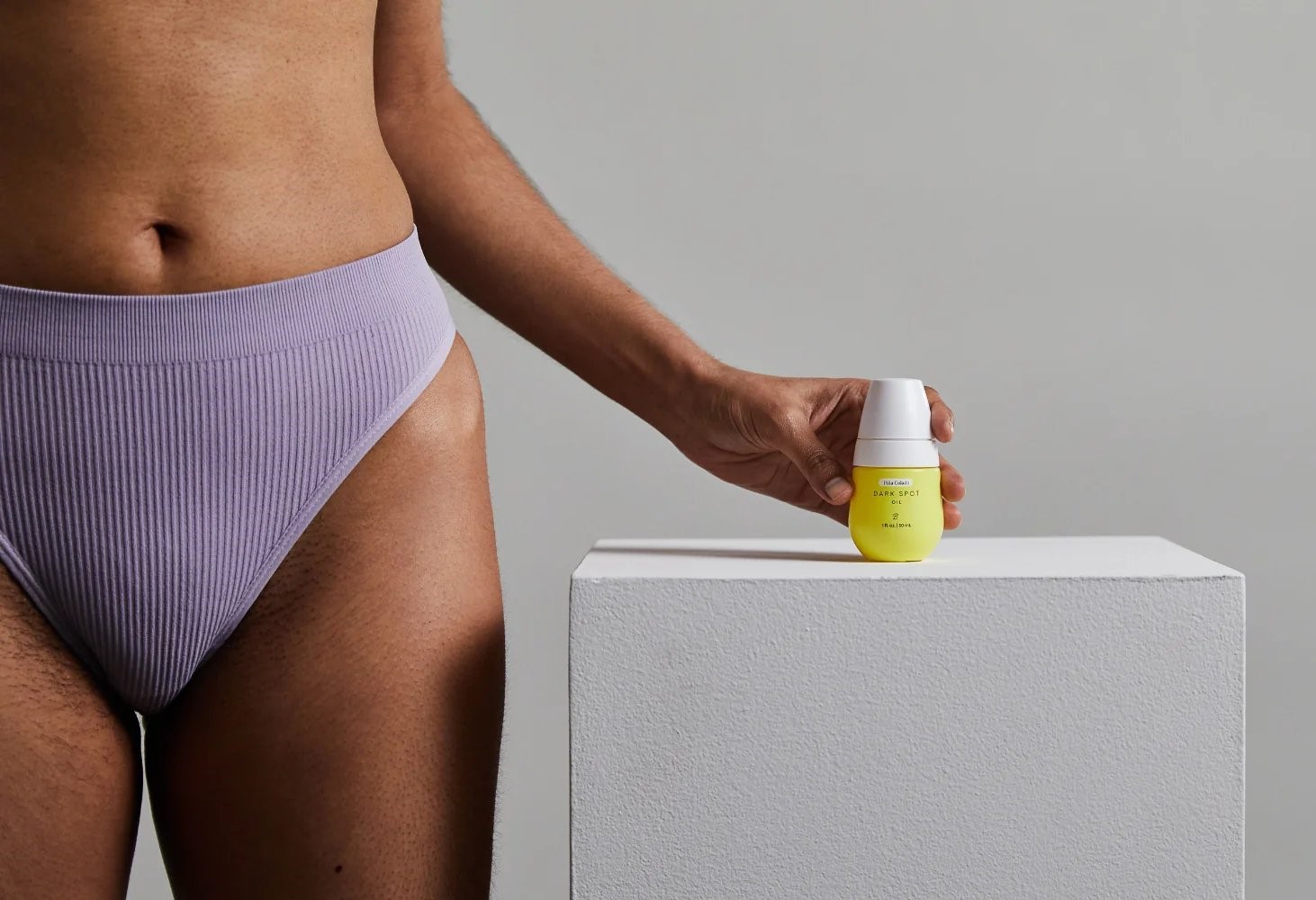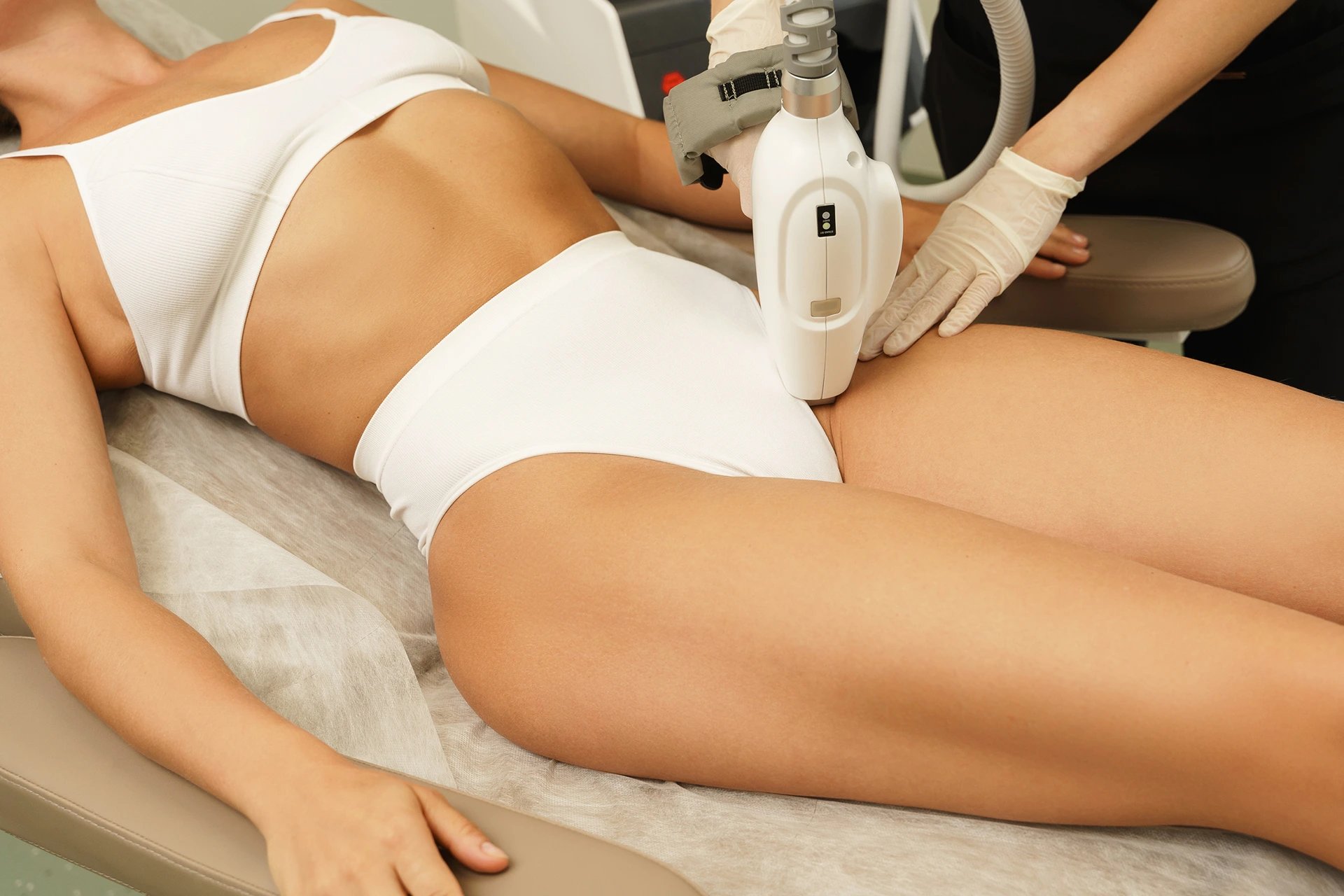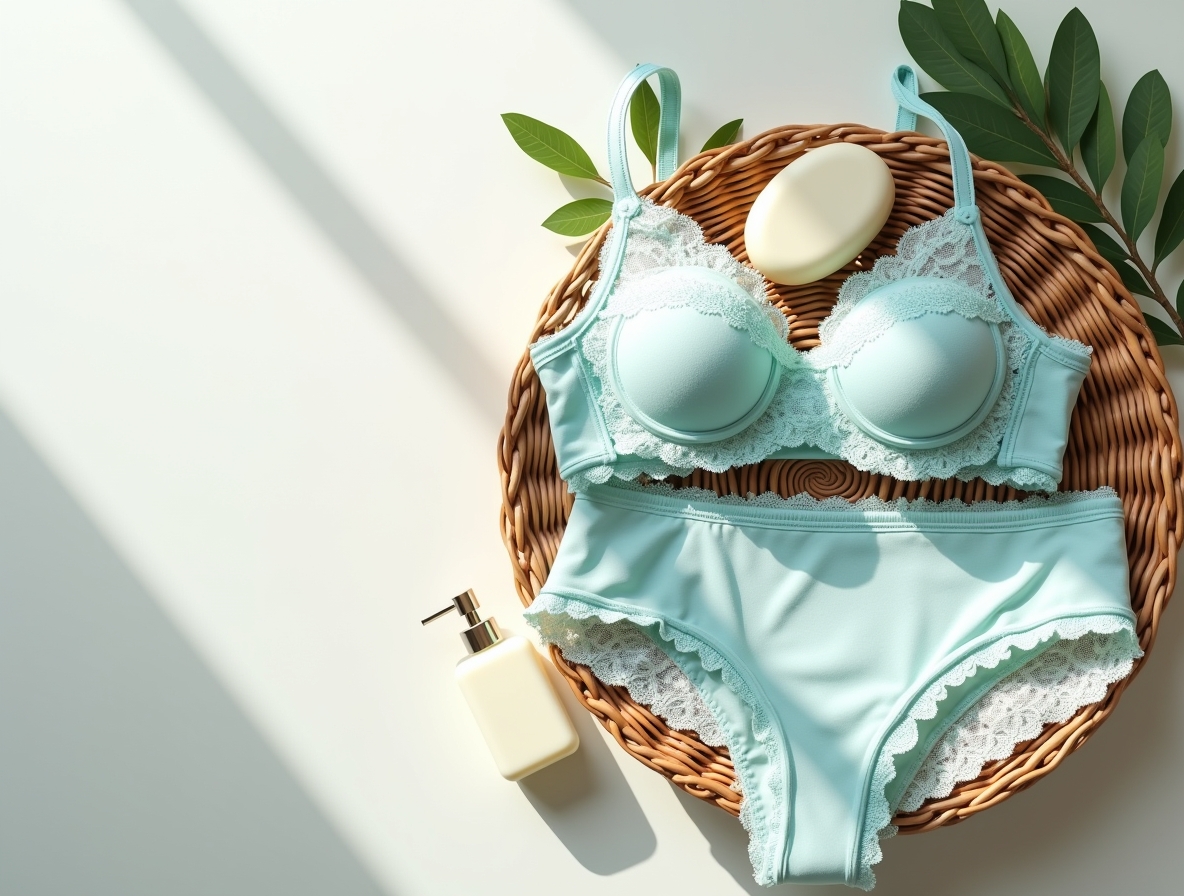Home>How-to Guides>For Women>How To Deal With Razor Bumps On Bikini Area


For Women
How To Deal With Razor Bumps On Bikini Area
Modified: August 2, 2023
Learn effective tips for women on how to deal with razor bumps on the bikini area. Say goodbye to skin irritation and achieve smooth, bump-free results.
(Many of the links in this article redirect to a specific reviewed product. Your purchase of these products through affiliate links helps to generate commission for Under-tec.com, at no extra cost. Learn more)
Table of Contents
Introduction
When it comes to personal grooming, many women opt for shaving as one of the most convenient and popular methods to remove unwanted hair. However, this can often lead to an unwelcome side effect: razor bumps on the bikini area. These pesky bumps, also known as razor burn or pseudofolliculitis barbae, can be uncomfortable, itchy, and even painful.
Razor bumps occur when the shaved hair strands curl back into the skin, causing inflammation and irritation. They can appear as red, raised bumps or even pustules, and can take a toll on your confidence, especially during swimsuit season. But fear not! There are steps you can take to prevent and treat razor bumps so that you can confidently flaunt your flawless bikini line.
In this article, we will delve into the causes of razor bumps, provide tips for prevention, and explore home remedies and over-the-counter products to address this common issue. We will also offer expert advice on shaving techniques to minimize the risk of razor bumps in the bikini area. So, let’s dive in and discover how to achieve silky-smooth skin without the unwelcome bumps.
Understanding Razor Bumps
To effectively deal with razor bumps, it is crucial to have a clear understanding of what they are and how they develop. Razor bumps, also known as pseudofolliculitis barbae, are small, irritated bumps that form on the skin after shaving. They can occur on any part of the body where hair is regularly shaved, but they are particularly common in the bikini area due to the sensitivity of the skin and the coarser nature of the hair.
The process of shaving can disrupt the natural hair growth cycle, leading to razor bumps. When a hair follicle is cut at an angle, it has a greater chance of growing back into the skin instead of growing outwards. This can cause inflammation, redness, and discomfort. Ingrown hairs can also develop, further exacerbating the problem.
Razor bumps can vary in severity, with some individuals experiencing a few small bumps while others may have larger, more painful bumps. Factors such as shaving technique, skin type, and hair texture can all contribute to the likelihood of developing razor bumps.
It’s important to note that razor bumps are not the same as razor burn, although the two are often used interchangeably. While razor burn refers to general skin irritation and redness caused by shaving, razor bumps specifically refer to the raised, inflamed bumps that result from ingrown hairs.
Now that we have a better understanding of what razor bumps are, let’s explore the common causes behind their development and how we can prevent them.
Causes of Razor Bumps
Razor bumps on the bikini area can be caused by a variety of factors, all of which contribute to the hair follicles becoming inflamed and irritated. By understanding these causes, you can take steps to minimize the risk of developing razor bumps and maintain smooth, healthy skin.
1. Improper Shaving Techniques: One of the primary causes of razor bumps is improper shaving techniques. Shaving against the direction of hair growth, using dull razors, or applying too much pressure while shaving can all increase the likelihood of razor bumps. It’s important to shave in the direction of hair growth and replace your razor regularly to avoid irritating the skin.
2. Curly or Coarse Hair: Individuals with curly or coarse hair are more prone to razor bumps. The natural curl or coarseness of the hair can cause it to grow back into the skin instead of outward, leading to ingrown hairs and irritation.
3. Dry or Sensitive Skin: Dry or sensitive skin can be more susceptible to razor bumps. When the skin is not adequately moisturized or protected, shaving can cause further irritation and inflammation. It’s essential to keep the skin hydrated and use shaving products that are suitable for your skin type.
4. Friction from Clothing: Tight clothing or fabrics that rub against the skin can exacerbate razor bumps. The constant friction can further irritate the already sensitive hair follicles, leading to more bumps. Opt for loose-fitting clothing, especially immediately after shaving, to reduce friction.
5. Ingrown Hairs: Ingrown hairs occur when the hair shaft becomes trapped underneath the skin, causing inflammation and the formation of razor bumps. This can happen when the hair is not correctly trimmed or when dead skin cells block the hair follicles. Gentle exfoliation and proper hair trimming techniques can help prevent ingrown hairs.
6. Bacterial Infections: In some cases, razor bumps can become infected with bacteria, leading to further redness, swelling, and discomfort. It’s crucial to keep the affected area clean and apply antiseptic creams or ointments to prevent infection.
Now that we have a better understanding of the causes of razor bumps, let’s explore some effective prevention tips to help you achieve a smoother and bump-free bikini area.
Prevention Tips for Razor Bumps
Preventing razor bumps on the bikini area requires a combination of proper shaving techniques, skincare practices, and overall skin maintenance. By following these prevention tips, you can minimize the risk of developing razor bumps and enjoy smooth, irritation-free skin.
1. Exfoliate Regularly: Exfoliation removes dead skin cells and helps prevent ingrown hairs. Prior to shaving, use a gentle exfoliating scrub or brush to slough off any buildup and promote smoother hair growth.
2. Use a Quality Razor: Invest in a high-quality razor with sharp blades to minimize the risk of irritation and ingrown hairs. Replace the blades regularly to ensure a clean and efficient shave.
3. Shave with the Grain: Always shave in the direction of hair growth to reduce the chances of ingrown hairs and irritation. Shaving against the grain increases the likelihood of razor bumps.
4. Don’t Stretch the Skin: Avoid pulling or stretching the skin while shaving, as this can cause the hair to retract under the skin’s surface. Shave gently and let the razor do the work for you.
5. Moisturize Before and After: Apply a moisturizing cream or gel to soften the hair and provide a protective barrier before shaving. After shaving, moisturize again to soothe the skin and prevent dryness.
6. Avoid Harsh Products: Choose shaving creams, gels, and soaps that are gentle and specifically formulated for sensitive skin. Avoid products with harsh chemicals or fragrances that can irritate the skin.
7. Avoid Tight Clothing: Opt for loose-fitting clothing, especially immediately after shaving. Tight clothing can rub against the skin and further irritate the hair follicles.
8. Take Breaks from Shaving: If possible, try to take breaks from shaving to allow the skin to recover. This can help reduce the frequency of razor bumps developing in the bikini area.
9. Avoid Sharing Razors: Sharing razors can increase the risk of bacteria transfer, leading to potential infections and further complications. Always use your own razor to maintain proper hygiene.
10. Seek Professional Help: If you continue to experience persistent razor bumps despite following preventive measures, consider seeking professional help, such as consulting a dermatologist or an esthetician who specializes in skincare.
By implementing these prevention tips into your shaving routine and overall skincare practices, you can significantly reduce the likelihood of developing razor bumps in the bikini area. However, if you do find yourself dealing with razor bumps, there are various home remedies and over-the-counter products that can help alleviate the discomfort and promote healing, which we will explore in the following sections.
Home Remedies for Razor Bumps
When dealing with razor bumps on the bikini area, there are several effective home remedies that you can try to soothe inflammation, reduce redness, and promote healing. These remedies are often easily accessible and can provide quick relief. However, it’s important to note that everyone’s skin is different, and what works for one person may not work for another. It’s always advisable to do a patch test and consult a healthcare professional if you have any concerns.
1. Aloe Vera Gel: Aloe vera has soothing and anti-inflammatory properties that can help calm irritated skin. Apply pure aloe vera gel to the affected area to reduce redness and promote healing.
2. Cold Compress: Applying a cold compress or ice pack to the razor bumps can help reduce inflammation and provide relief from discomfort. Wrap ice cubes in a cloth and gently press it on the affected area for a few minutes.
3. Tea Tree Oil: Known for its antiseptic and antibacterial properties, tea tree oil can help prevent infection and reduce inflammation. Dilute a few drops of tea tree oil with a carrier oil, such as coconut oil, and apply it to the razor bumps.
4. Witch Hazel: Witch hazel is a natural astringent that can help soothe irritated skin and reduce inflammation. Apply witch hazel to a cotton pad and gently dab it on the affected area.
5. Oatmeal Bath: Taking an oatmeal bath can soothe and nourish the skin. Add finely ground oatmeal to warm bathwater and soak in it for 15-20 minutes. Pat dry the skin gently afterward.
6. Honey: Honey is known for its antibacterial and moisturizing properties. Apply a thin layer of honey to the affected area and leave it on for 10-15 minutes before rinsing off with lukewarm water.
7. Cucumber Slices: Cucumber has cooling and anti-inflammatory properties that can help reduce redness and irritation. Place chilled cucumber slices on the razor bumps for 10-15 minutes to soothe the skin.
8. Coconut Oil: Coconut oil is a natural moisturizer that can provide relief from dryness and soothe irritated skin. Apply a thin layer of organic, virgin coconut oil to the affected area and leave it on overnight.
9. Black Tea Bags: The tannic acid found in black tea can help reduce inflammation and redness. Brew a cup of black tea, let the teabag cool down, and apply it to the razor bumps for a few minutes.
10. Apple Cider Vinegar: Apple cider vinegar has antimicrobial and anti-inflammatory properties that can help relieve razor bumps. Dilute apple cider vinegar with water and apply it to the affected area with a cotton pad.
Remember to use these home remedies with caution and discontinue use if you experience any adverse reactions. If the razor bumps persist or worsen, it’s recommended to consult a healthcare professional for further guidance and treatment options.
Over-the-counter Products for Razor Bumps
If home remedies do not provide sufficient relief from razor bumps on the bikini area, there are several over-the-counter products available that can help alleviate the symptoms and promote healing. These products are specifically formulated to target razor bumps and provide effective solutions for smooth, bump-free skin. Here are some common over-the-counter products to consider:
1. Topical Creams: Look for creams or lotions containing ingredients such as salicylic acid, glycolic acid, or benzoyl peroxide. These ingredients help exfoliate the skin, reduce inflammation, and prevent infection.
2. Exfoliating Scrubs: Exfoliating scrubs designed for the bikini area can help remove dead skin cells and prevent ingrown hairs. Look for products with gentle exfoliating agents such as jojoba beads or sugar.
3. Ingrown Hair Serums: These serums usually contain ingredients like tea tree oil, witch hazel, or alpha hydroxy acids (AHAs) that help reduce inflammation, exfoliate the skin, and prevent ingrown hairs.
4. Hydrocortisone Creams: Hydrocortisone creams have anti-inflammatory properties and can help reduce redness, itching, and swelling associated with razor bumps. Apply a thin layer to the affected area as directed.
5. Aftershave Balms: Aftershave balms are specifically designed to soothe and moisturize the skin after shaving. Look for balms with ingredients like aloe vera, chamomile, or vitamin E to provide relief from razor bumps.
6. Gel Pads: Gel pads are adhesive pads that can be applied to the bikini area after shaving to provide a cooling and soothing effect. They help reduce inflammation and provide instant relief from razor bumps.
7. Medicated Pads: Medicated pads are pre-soaked with ingredients like salicylic acid or glycolic acid that exfoliate the skin and reduce inflammation. They are convenient to use and can be applied directly to the affected area.
8. Antibacterial Creams or Ointments: If you notice signs of infection, such as persistent redness, swelling, or pus-filled bumps, consider using an antibacterial cream or ointment recommended by a healthcare professional.
9. Razor Bump Treatment Kits: Some brands offer complete kits specifically designed to target razor bumps. These kits usually include a combination of products like cleansers, exfoliators, and creams to address the issue comprehensively.
10. Soothing Moisturizers: Look for moisturizers that are specially formulated for sensitive skin and contain ingredients like aloe vera, shea butter, or chamomile. These moisturizers help soothe irritation and maintain hydrated, healthy skin.
Before using any over-the-counter product, it’s important to read and follow the instructions carefully. If you have any allergies or underlying skin conditions, consult a healthcare professional before introducing any new products into your skincare routine.
When to Seek Medical Help
In most cases, razor bumps on the bikini area can be effectively managed with home remedies and over-the-counter products. However, there are situations when it’s advisable to seek medical help to ensure proper diagnosis and treatment. Here are some instances when you should consider consulting a healthcare professional:
1. Severe or Persistent Symptoms: If your razor bumps are causing significant discomfort, pain, or have not shown signs of improvement after trying home remedies and over-the-counter treatments, it’s recommended to seek medical advice. This could indicate a more severe underlying condition or the need for stronger prescription medications.
2. Signs of Infection: If you notice signs of infection such as increasing redness, swelling, pus-filled bumps, or warmth around the affected area, it’s important to consult a healthcare professional. They can assess the situation and prescribe appropriate antibiotics or treatments to prevent the infection from spreading.
3. Allergic Reactions: If you experience an allergic reaction to any home remedies or over-the-counter products, such as severe itching, rash, or difficulty breathing, seek immediate medical attention. Allergic reactions can be serious and require prompt medical treatment.
4. Worsening Symptoms: If your razor bumps worsen over time, spread to other areas, or become more painful and inflamed, it’s advisable to see a healthcare professional. They can evaluate the situation and determine if further intervention or specialized treatments are necessary.
5. Recurring Razor Bumps: If you consistently experience razor bumps in the bikini area, despite following preventive measures and using appropriate products, it’s worth consulting a dermatologist. They can assess your specific case, identify any underlying causes, and recommend a personalized treatment plan.
6. Chronic Skin Conditions: If you have a pre-existing skin condition, such as eczema or psoriasis, that is being aggravated by razor bumps, it’s crucial to seek medical help. A healthcare professional can provide specific guidance and treatments tailored to your condition to manage both the skin condition and the razor bumps effectively.
Remember, healthcare professionals have the expertise and knowledge to diagnose and treat underlying skin conditions. They can provide appropriate prescriptions, recommend specialized treatments, or even suggest alternative hair removal methods to help manage recurring razor bumps effectively.
Don’t hesitate to reach out to a healthcare professional if you have any concerns or questions about your razor bumps. They can provide the necessary guidance and support to ensure your skin stays healthy and free of discomfort.
Tips for Shaving the Bikini Area to Prevent Razor Bumps
Proper shaving techniques play a crucial role in preventing razor bumps on the bikini area. By following these tips, you can minimize the risk of irritation, ingrown hairs, and ultimately, the formation of razor bumps:
1. Trim the Hair: Before shaving, trim the hair in the bikini area to a manageable length using scissors or clippers. This helps prevent the razor from pulling or tugging on longer hairs, reducing the chances of razor bumps.
2. Warm Up the Skin: Prior to shaving, take a warm shower or place a warm towel on the bikini area to soften the hair and open up the pores. This allows for a closer and smoother shave, reducing the risk of razor bumps.
3. Use a Sharp Razor: Always use a clean and sharp razor to ensure a close and precise shave. Dull blades can cause more friction and irritation, increasing the likelihood of razor bumps. Replace your razor regularly, ideally every 5-7 uses.
4. Shave in the Direction of Hair Growth: Shave in the direction of hair growth to minimize irritation and ingrown hairs. Going against the grain can lead to more razor bumps. Be gentle and let the razor glide over the skin without applying excessive pressure.
5. Don’t Go Over the Same Area Multiple Times: Avoid repeatedly going over the same area as it can increase the chances of irritation and razor bumps. If necessary, reapply shaving cream and shave in the same direction to achieve a closer shave.
6. Use Shaving Cream or Gel: Apply a shaving cream or gel to the bikini area before shaving. These products provide lubrication and help the razor glide smoothly, reducing friction and irritation.
7. Rinse the Razor Often: Rinse the razor blade frequently while shaving to remove hair and shaving cream buildup. This helps maintain the effectiveness of the razor and reduces the risk of clogging or dragging.
8. Moisturize After Shaving: After shaving, gently pat the skin dry and apply a moisturizing lotion or cream. This helps soothe the skin, lock in moisture, and prevent dryness, which can contribute to razor bumps.
9. Avoid Tight Clothing: Wear loose-fitting underwear or clothing immediately after shaving to allow the skin to breathe and minimize friction. Tight clothing can further irritate the freshly shaved skin, leading to more discomfort and bumps.
10. Maintain Consistent Shaving Habits: Try to maintain a regular shaving routine, avoiding long periods between shaves. Consistency helps prevent the hair from becoming too long and reduces the risk of ingrown hairs and razor bumps.
By following these tips, you can improve your shaving technique and minimize the chances of developing razor bumps on the bikini area. Remember to be gentle with your skin and listen to your body’s responses to prevent unnecessary irritation or discomfort.
Conclusion
Razor bumps on the bikini area can be a common and frustrating issue for many women. However, by understanding the causes and taking proactive measures, you can prevent and manage this pesky problem. Implementing proper shaving techniques, using suitable products, and maintaining healthy skincare practices are key to achieving a smooth and bump-free bikini line.
We explored the causes of razor bumps and discovered that improper shaving techniques, curly or coarse hair, dry or sensitive skin, friction from clothing, ingrown hairs, and bacterial infections can all contribute to their development. By addressing these factors, such as shaving with the grain, using sharp razors, moisturizing the skin, and avoiding tight clothing, you can significantly reduce the likelihood of razor bumps appearing.
We also discussed various strategies for prevention, including regular exfoliation, the use of quality shaving products, and moisturizing before and after shaving. These practices help maintain the skin’s health, minimize irritation, and promote smooth hair growth.
In addition, we explored home remedies such as aloe vera gel, cold compresses, tea tree oil, and oatmeal baths, as well as over-the-counter products like creams, exfoliators, and gels that can effectively alleviate razor bumps. It is important to remember that everyone’s skin is unique, and it may require some trial and error to find the most effective remedies for your specific needs.
However, if razor bumps persist, worsen, or are accompanied by signs of infection, it’s crucial to seek medical help. A healthcare professional can provide a proper diagnosis, prescribe appropriate treatments, or offer alternative hair removal options to manage the issue effectively. They are equipped to address any underlying skin conditions and offer personalized guidance for your specific situation.
In conclusion, dealing with razor bumps on the bikini area requires a combination of preventive measures, effective shaving techniques, and proper skincare practices. By following the tips and strategies outlined in this article, you can achieve a flawless bikini line and confidently enjoy the benefits of silky-smooth skin.
